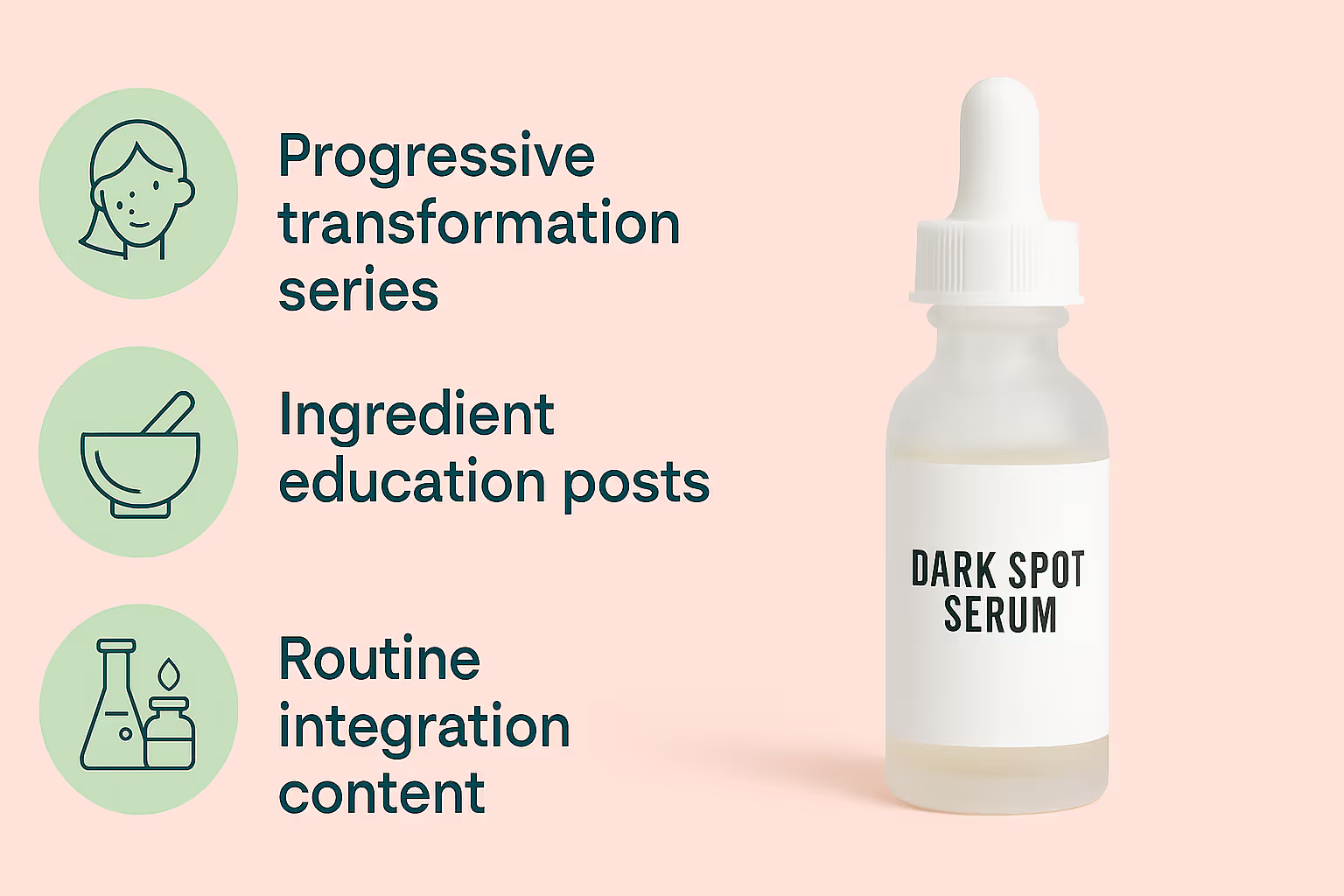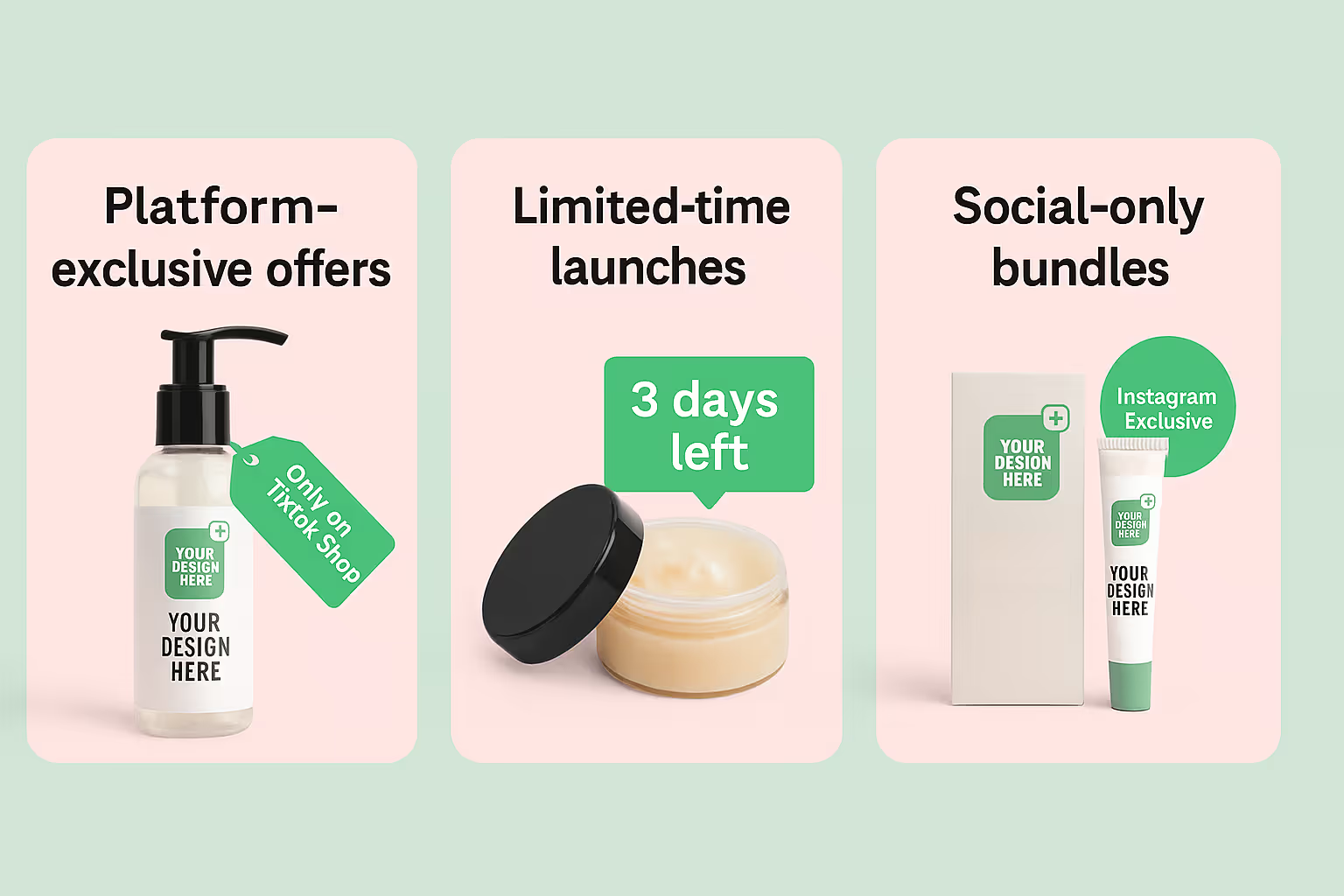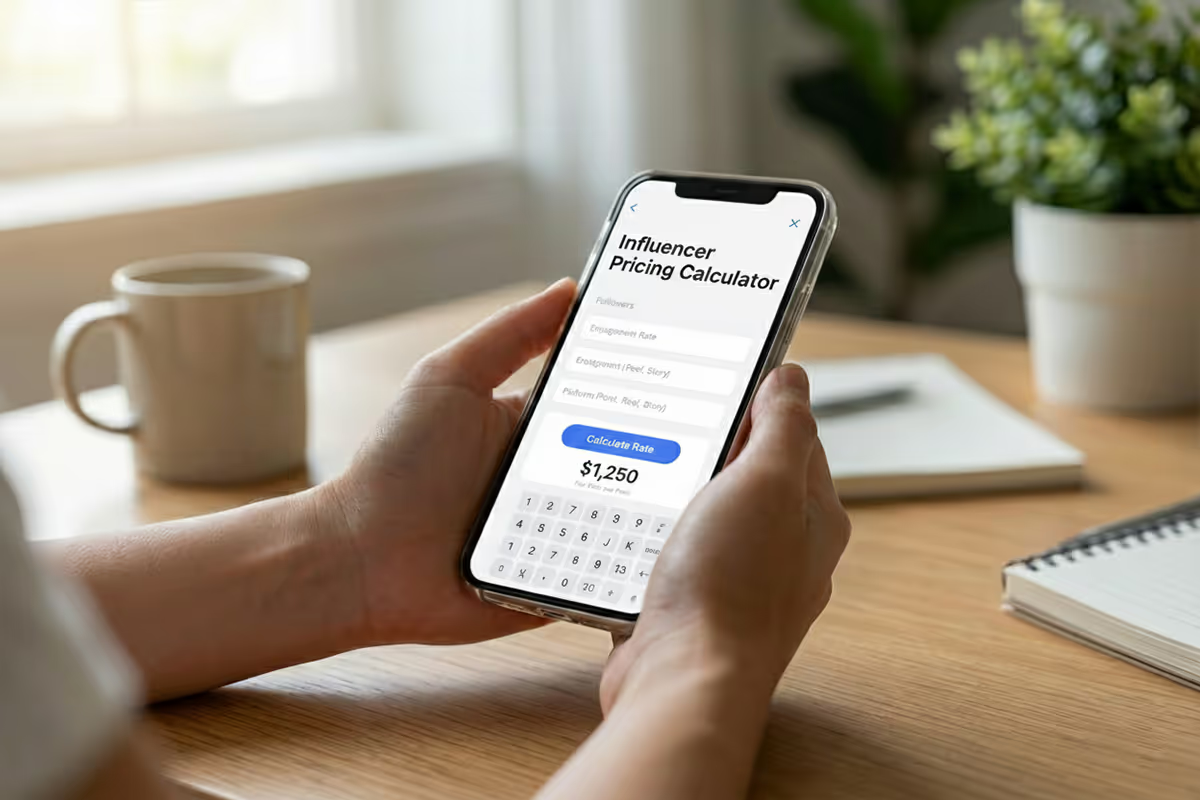
With 4.8 billion social media users and beauty content racking up millions of views, skincare brands must tap into this growing opportunity.
Platforms like Instagram and TikTok now drive key purchasing decisions, especially among younger consumers.
Building a skincare brand takes more than quality; it demands smart social media promotion that turns followers into loyal customers. Learning how to promote skincare on social media helps brands cut through the noise and drive real engagement.
Promote Skincare Products on Social Media in These 5 Efficient Ways
Successful skincare promotion on social media requires a multi-layered approach that combines educational content, authentic engagement, and platform-specific strategies.
The key lies in building trust before selling, positioning your brand as a knowledgeable authority while creating content that genuinely helps your audience solve their skincare concerns.
Start with Educational Content That Builds Trust
The foundation of effective skincare promotion starts with content that educates while showcasing product benefits naturally.

Document real customer journeys over extended periods rather than showcasing overnight miracles. Consider these high-performing content formats:
- Progressive transformation series - Follow customers through 30, 60, and 90-day journeys with consistent lighting and angles
- Ingredient education posts - Break down complex skincare science into digestible explanations that position your brand as knowledgeable.
- Routine integration content - Show how products fit into realistic daily skincare routines rather than unrealistic 12-step regimens
- Problem-solution storytelling - Address specific skin concerns with targeted product recommendations and usage tips
Ingredient spotlights perform exceptionally well because they build credibility without being overly sales-focused.
Instead of simply mentioning "hyaluronic acid," explain how different molecular weights penetrate skin layers differently. This level of detail separates serious brands from generic drop-shippers.
Tailor Content for Each Platform
Each social platform rewards different content formats, and skincare brands must tailor their approach rather than recycling identical content across channels.
- Instagram: It thrives on polished aesthetics combined with authentic storytelling. Focus on lifestyle integration shots showing products in natural bathroom settings, morning routine sequences, and well-lit skincare flat lays.
Stories provide opportunities for real-time engagement through polls about skin concerns, quick application tutorials, and behind-the-scenes content from product development.
- TikTok: TikTok demands authenticity over polish, rewarding raw, conversational content that feels genuine. Skincare brands succeed by addressing common skincare myths, reacting to viral trends with expert commentary, or sharing unfiltered "day in the life" content.
The platform's algorithm particularly favors educational content that maintains viewer attention until the final seconds.
- YouTube: It serves as the long-form education hub where detailed tutorials, comprehensive ingredient deep-dives, and honest product comparisons perform best.
This platform excels at capturing users in the research phase of their buying journey, making it ideal for establishing expertise and building trust before the purchase decision.
Leverage User-Generated Content for Social Proof
Customer-created content carries more weight than brand-produced materials because it removes the bias factor. However, generating authentic user content requires strategic planning beyond simply asking customers to post photos.
Implement a customer photo incentive program that rewards authentic sharing:
- Tiered reward system - Video reviews earn more points than simple product photos, encouraging higher-quality submissions
- Monthly featured customer - Highlight one customer's transformation story across all platforms with their permission
- Community challenges - Create themed content challenges like "30-day glow-up" or "morning routine evolution."
Feature customer content prominently in your posts, but always ask permission first. This approach provides social proof while making customers feel valued, increasing their likelihood of making repeat purchases and referrals.
Build Strategic Influencer Partnerships
Most skincare brands approach influencer marketing incorrectly by focusing on follower counts rather than engagement rates and audience alignment.
Structure partnerships as long-term relationships rather than one-off posts. Skincare results take time to demonstrate, and audiences need to see consistent product use over months to believe in effectiveness. Consider these partnership approaches:
- 3-6 month collaboration periods - Allow influencers sufficient time to show genuine results and build authentic opinions
- Exclusive discount codes - Provide trackable conversion metrics while offering real value to influencer audiences
- Product education sessions - Train influencers on proper usage and ingredient benefits so they can speak knowledgeably about products
- Co-created content series - Develop educational content together that benefits both the influencer's audience and your brand goals
Convert Social Traffic into Sales
Social media engagement means nothing without conversions, yet many skincare brands struggle to translate likes and comments into purchases.
The key lies in creating clear pathways from social content to purchase while maintaining the natural flow of the user experience.

Create compelling reasons for immediate action while tracking conversion sources:
- Platform-exclusive offers - Provide genuine value while measuring each platform's sales contribution
- Limited-time launches - Build urgency around new product releases or seasonal collections
- Social-only bundles - Package complementary products at attractive price points available only through social channels
Develop email capture strategies that feel natural within social content. Offer skincare guides, routine templates, or ingredient glossaries in exchange for email addresses.
This approach builds an owned audience that isn't subject to algorithm changes while providing immediate value to potential customers.
Building Trust Through Transparency
Today’s skincare consumers are more informed and more skeptical than ever. Brands that embrace transparency by acknowledging product limitations, realistic timelines, and potential side effects earn deeper trust than those making exaggerated claims.
Share behind-the-scenes content about product development, including formulation challenges and ingredient selection. This humanizes your brand and shows genuine care in creating effective solutions.
Respond publicly and professionally to negative comments when appropriate. Constructive engagement builds credibility and reassures potential customers.
Finally, educate your audience by busting common skincare myths with science-backed insights. Explaining ingredient interactions, proper usage, and what to realistically expect helps position your products as honest, reliable solutions.
Leveraging User-Generated Content
Customer-created content carries more weight than brand-produced materials because it removes the bias factor. However, generating authentic user content requires strategic planning beyond simply asking customers to post photos.
Implement a customer photo incentive program that rewards authentic sharing:
- Tiered reward system - Video reviews earn more points than simple product photos, encouraging higher-quality submissions
- Monthly featured customer - Highlight one customer's transformation story across all platforms with their permission
- Community challenges - Create themed content challenges like "30-day glow-up" or "morning routine evolution."
Feature customer content prominently in your posts, but always ask permission first. This approach provides social proof while making customers feel valued, increasing their likelihood of making repeat purchases and referrals.
Influencer Partnerships That Work
Most skincare brands approach influencer marketing incorrectly by focusing on follower counts rather than engagement rates and audience alignment.
Micro-influencers with 10,000-100,000 followers often deliver better ROI than mega-influencers because their audiences trust their recommendations more.
Consider these partnership approaches:
- 3-6 month collaboration periods - Allow influencers sufficient time to show genuine results and build authentic opinions
- Exclusive discount codes - Provide trackable conversion metrics while offering real value to influencer audiences
- Product education sessions - Train influencers on proper usage and ingredient benefits so they can speak knowledgeably about products
- Co-created content series - Develop educational content together that benefits both the influencer's audience and your brand goals
Measuring Success and Optimization
Track metrics beyond vanity numbers like followers and likes. Focus on engagement rates, website traffic from social platforms, conversion rates by traffic source, and customer lifetime value from social media acquisitions.
Use UTM parameters in social media links to track which platforms and specific posts drive the most valuable traffic. This data informs future content strategy and budget allocation across platforms.
Monitor mentions of sentiment using tools like Brand24 or Hootsuite to understand how audiences perceive the brand across different platforms. This feedback helps identify content that resonates while catching potential issues before they escalate.
Routine-Based Retargeting: The Next Step for Skincare Brands
Basic retargeting isn’t enough. Use routine-based retargeting sequences to align ads with where users are in their skincare journey. Leverage Facebook and TikTok Pixels to segment by behavior, like watching ingredient videos or clicking acne tips.
Show routine viewers a limited-time bundle on Stories. Follow up acne clicks with dermatologist-backed content or free skin assessments. This tailored approach drives higher conversions, especially among 4.8 billion social media users seeking trusted skincare advice.
Advanced Tactics for Competitive Advantage
Monitor competitor social media advertising through Facebook's Ad Library to identify successful creative approaches and messaging strategies. This publicly available tool shows all active ads from any brand, providing insights into their targeting strategies and creative testing approaches.
Use this intelligence to identify gaps in competitor messaging that your brand can fill uniquely.
Partner with complementary brands for cross-promotional opportunities. Skincare brands can collaborate with makeup companies, wellness brands, or even private label supplements companies focusing on beauty-from-within approaches. These partnerships expand reach while providing mutual value to both audiences.
Create seasonal content calendars that align with skincare needs throughout the year. Winter months require different messaging than summer, and planning this content allows for better creative development and consistent posting schedules.
Where to Go From Here With Your Content
Success in skincare social media marketing requires consistent execution, not perfect implementation from day one. Start with the platform where your target audience is most active, then expand once systems are in place.
Focus on building genuine relationships through valuable content and authentic engagement. Skincare is personal, and private label skincare brands that treat it that way, offering real solutions over hard selling, will earn trust, loyalty, and long-term growth.
FAQ
Related blogs

Influencer Pricing Calculator: Find Your Fair Rate for Posts, Reels & Stories
.avif)
How To Market Pet Products Through Storytelling: Win Attention, Build Trust, and Boost Sales Naturally
.avif)
How To Market Coffee To Gen Z: The High-Impact Blueprint Every Brand Needs
.avif)

